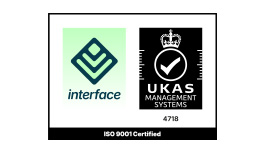Solving vibration problems at Nuffield Health Woking Hospital’s IVF clinic
The Brief
Operatives at the IVF laboratory at Nuffield Health Woking Hospital were experiencing problems with the operation of sensitive equipment (inverted microscope used for ICSI, IMSI), caused by vibration. In need of experts to advise on the matter, they reached out to KP Acoustics Group to assess the magnitude of these issues at the existing site, form a benchmark, and then ensure that a suitable vibration control strategy was implemented for the proposed new site. The overall aim was to ensure all IVF operations remain unimpeded by vibrations caused by road traffic or building movement.
The Solution
Initial Assessment
As a first step, a site visit was arranged at the existing IVF laboratory. Vibration measurements were conducted at multiple positions within the laboratory in order to assess the current vibration signature of the site. Operatives at the clinic highlighted one main area of concern to the KP team. It was soon clear that the main issue was that minute vibrations were caused on the microscope by road traffic, especially when HGVs passed by, as well as by heavy footsteps within the laboratory and corridor.
The same procedure was repeated within the new site in order to assess the dynamic response of the floor. Tests were undertaken to determine the natural frequency of the structural slab.
The floor was physically excited by means of a vertical force impulse and this test was undertaken at a number of positions spread across the demise floor. In both cases, the floor’s response was detected by a floor-mounted acceleration transducer connected to an FFT vibration analyser.
Across our assessment, the common denominator was based on British Standard BS 6399-1:1996 and BS522-2:2009. From this, we knew that the design imposed load for which ‘Operating theatres, X-ray rooms, utility rooms’ should be designed is 2.0kN/m2. Moreover, where floors are likely to be subject to a degree of synchronised crowd movement, the floor should be designed for ultimate limit state considerations in accordance with the requirements given in the National Annex to BS EN 1991-1-1.
Additionally, according to these standards, we knew that the floor may be designed to have a fundamental frequency of at least 8.4Hz vertically and at least 4Hz horizontally, in which case the resonant effects need not be evaluated, or the floor should be designed to resist the anticipated dynamic loads due to rhythmic activity which should be considered as an additional imposed load case.
Our measurements showed a range of resonant responses, with no natural frequencies below 23Hz on the z-axis which is considered the most critical in terms of the proposed floor’s structural response.
On top of this, artefacts in the lower frequency range were not considered significant, as they were sporadic and dependent on factors such as the movement of the cable during the excitation of the floor.
Overall, the measured natural frequency at the proposed site was outside of the range considered to be at high risk of harmonic response to heavy footfall excitation. At higher values, the structure was at an increasingly lower risk of harmonic response.
Vibration Control Strategy
In order to ensure that the natural frequency of the floor was suitably controlled, KP Acoustics recommended a bespoke vibration control strategy that should be adopted within the build-up of the laboratory’s floor.
With a natural frequency of around 14Hz, a floating floor was proposed using a grid of distributed elastomeric bearings aiming towards an isolation in the region of 98%.
Results
Since the project, vibration measurements have been taken on the existing IVF laboratory floor at Nuffield Health Woking Hospital in order to establish the current natural frequency of the floor and correlate it to the issues currently experienced by members of staff in terms of movement of high-precision microscopy equipment.
The procedure was repeated within a proposed site at a nearby address, in order to establish the natural frequency of the floor and recommend a suitable isolation strategy, so as not to experience similar issues. The measured dominant natural frequencies confirmed that suitable isolation strategies have been proposed.
Our team has acquired extensive experience in noise and vibration control scenarios. Get in touch with our acoustic consultants today.












